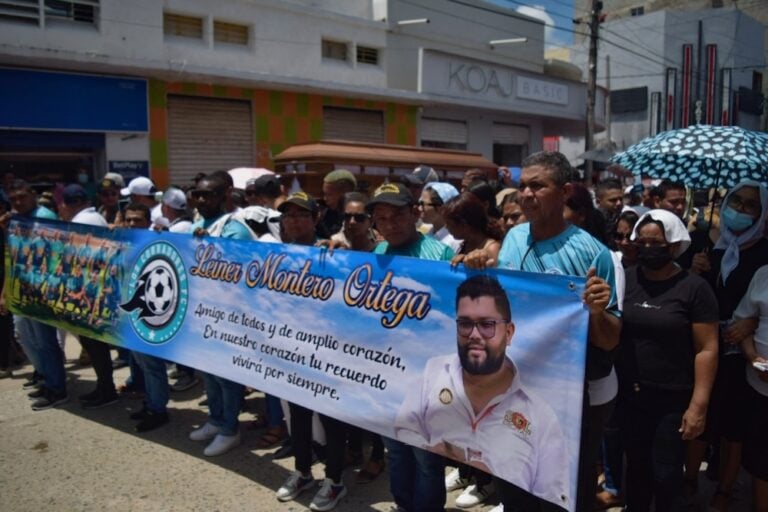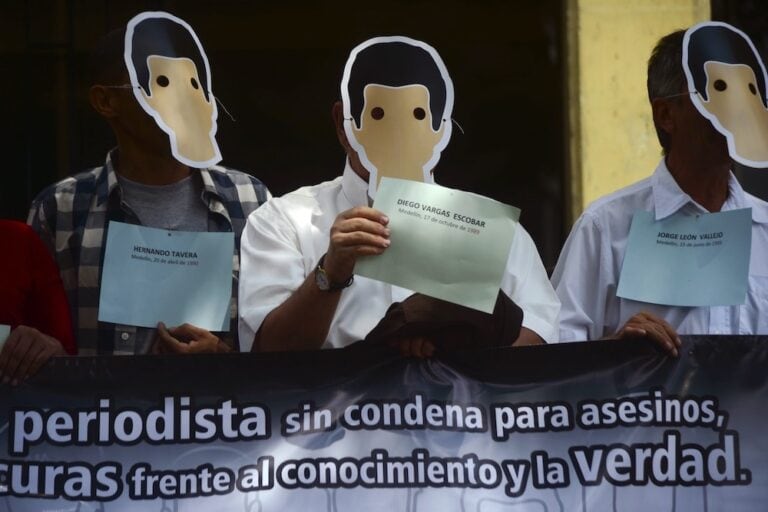In Colombia a powerful fight against online gender violence is underway, using a tool destined to become a movement in its own right.
This is a translation of the original article.
“Twitter Storm”, “Trolls”, stalkers and “bullies”. Terms used to define what any social network user clearly understands: the internet today is more volatile than ever, and any topic can lead to epic controversies.
During times of political intolerance, immediacy of communication, and ease of access to the Internet, screens are full of passions running free of any taboos. It is difficult to escape the spiral of digital violence, which is now being transformed into something very real, given the blurring of the division between the virtual and real worlds to the point where relationships, daily activities, and contact in general are carried out in large part via the internet.
Given the way things are, gender violence is one of the problems that jumped from the real to the virtual world with extreme virulence. If Latin American societies were already violent and sexist – or “machista” – then social networking platforms have provided even more of a catalyst for these types of attitudes and behaviours. The immediacy and anonymity of online interactions have contributed, and the tone of commentaries is sometimes chilling, as evidenced by a message sent to Noelía Diaz, the secretary general of the Sindicato de Periodistas del Paraguay (Paraguayan Journalists Union, SPP): “…you need to be assassinated and I would be delighted to kill you… Afterward, I would go to jail happy. I’m going to do it. I will find you.”
Luckily, however, all is not lost. In Colombia, a powerful fight against online gender violence is underway, using a tool destined to become a movement in its own right. Originating in 2015, the tool uses humour to denounce a very painful social affliction. Its success has catapulted it forward, expanding to other countries and regions, and becoming a lifesaver for organisations seeking a way to combat attacks, censorship and violence against women and minorities.
In this article we describe the main characteristics of “Alerta Machitroll” [combining the terms “machista” and “troll”], as explained by Amalia Toledo, Project Coordinator for the Colombian civil society group Fundación Karisma. We share some of the primary challenges and lessons learned, so others can join the fight against online gender violence, whether as an organisation or as an individual.
The original spark
It all began in Finland, when international relations investigator Saara Särmä began to focus on an occurrence so common that nobody was denouncing it: panel discussions composed 100% of men.
The phenomenon is widespread: a group of men characterised as experts expound on an issue at a conference or seminar, which is moderated or facilitated by… a man. Särmä noticed this issue and began a Twitter campaign in which she uploaded photos of panels made up entirely of men and gave them a “stamp” or “certificate” consisting of a meme of David Hasselhoff approving of the image. The idea became extremely popular and was the original spark for the Alerta Machitroll project.
“This was our inspiration at Karisma. We were concerned about the expansion of digital gender violence. In a meeting of innovators and Karisma staff, we arrived at the idea of creating our own stamp, the Machitroll stamp,” Toledo said.
The project
Alerta Machitroll, a campaign launched by Fundación Karisma in Colombia in 2015, seeks to combat cyber-misogyny: violence against women taking place in the digital environment. Karisma as an organisation specializes in “technology for development” and its links to human rights.
According to Toledo, Karisma’s idea is to “employ humour and tools that are simple to use in order to identify and denounce sexist or machista violence on the Internet.”
“By using our Alert Generator, we invite you to employ creativity, humour and a non-threatening form of communication to identify narratives and exchanges that attack the rights of women or non-binary individuals.”
The Alert Generator works intuitively. Any user can upload a screenshot and choose a stamp to mark their alert: Incurable Machitroll (Machitroll Incurable), Recoverable Machitroll (Machitroll Rescatable) or Machitroll Alert (Alerta Machitroll). The stamp chosen can be adjusted or moved over the image in order to adapt it to the contents of the screenshot.
“Our goal was to create a simple and intuitive tool that can be used easily with any device,” Toledo said, adding that this project can “only continue to grow.”
Karisma and their Alerta Machitroll campaign have expanded over the years, and they keep adding content to the initiative. Today, Alerta Machitroll includes a “Decálogo” (Decalogue) oriented toward providing “machitrolls” with tools for controlling the violently misogynistic behaviours within themselves.
The campaign was developed as part of the World Wide Web Foundation’s Women’s Rights Online project.

The main challenges
According to Toledo, the campaign has been well received by users and has grown beyond Colombia’s borders. She noted that the term “machitroll” is being used throughout Latin America, and contributions and denunciations are coming from far and wide.
For organisations and activists reading this, there are a number of challenges that should be taken into consideration when launching a tool or project of this nature:
1) Endurance: It is very difficult to keep people motivated when it comes to online issues. “When we began in 2015 there was hardly any content about digital violence. Now, in 2018, it’s everywhere. It’s getting harder and harder for people to be involved.” The solution? “Don’t fall asleep. We always have to be innovating, looking for new ways to reach people.” In the case of Machitrolls, we need to take the tool from the online world and try to reach people “physically”, with workshops and other initiatives.
2) Design, Design, Design: Civil society initiatives are almost always based on profound principles of altruism or human right defence. That is not enough. Content needs to be well presented. “Design is a barrier. If you don’t use it well, you’re lost. The soul of this campaign is the high quality design of the tool,” Toledo commented.
3) Give the problem a name: A fundamental issue is that generic problems do not capture people’s attention. People do not identify with them. “We found this name Machitrolls, which originated in Spain. The name stuck with us and with this one term we could focus on a very large and very serious problem.”
4) Funding or closure: For almost all civil society organisations one of the main barriers is funding. Two lifesavers: “You need to look for free, open source tools and, above all, appeal to voluntary action. At times the responses one receives are surprising,” Toledo noted.
5) Respectful content: Good content sells, and so does controversial content. But if the heart of your campaign is based on denouncing some type of human rights violation, sexist violence, attack, etc., then don’t be like the person or group you are denouncing. “You always have to look for alternate ways of doing things. That’s why we chose humour,” Toledo said.
Lessons learned
Not everything in the project was a success. During the interview Toledo repeatedly noted how “exasperatingly difficult” and at the same time “extremely important” it was to “find the right people” to carry out the development and design work for the online project.
“The technical aspects are fundamental. We are faced with a system where if you are not working with the right people it can become very expensive, a danger for the best of ideas,” the activist explained when consulted regarding the most important lessons learned during the years of the Alerta Machitroll project.
Toledo recalled that in 2016 they encountered serious problems when the developers and designers in charge of carrying out technical improvements for the tool failed to do so. As a result, there were no tools in place for all of 2017.
“It was extremely difficult to find the right team. In the online world the functions that make your application friendly, easy to use, are fundamental. Luckily, the tool survived thanks to the hashtag,” she added.

What lies ahead for Machitrolls?
Going forward, Karisma has various actions and dreams in mind. The first is already becoming a reality, with the proposal to take Machitroll to the streets via a series of workshops in different cities. The first four “akelarres” (“covens”) were carried out in September and October in Bogotá.
“We want to look into the possibility of this being stand alone, something beyond Karisma that becomes a movement in its own right.” For Toledo, it could take “years” for this to happen; the workshops are the “first step” in going forward in that direction.
“Involving people outside of the Internet is just as or more important than doing it online, so that people feel they are a part of it and take action,” she added.
Meanwhile, the next challenge is clear. “Right now we are identifying the problem, but this does not resolve the issue for the victims,” Toledo noted.
There is also the issue of growth: “We must consider an evolution that on one hand is sensitive to the victims, and on the other hand reaches more audiences, above all the machitrolls, in order to contribute to generating change.”



